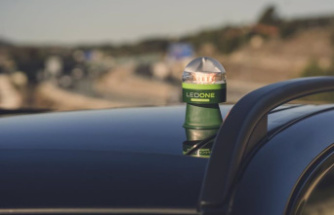Though Boeing paid $12 million in late 2015 to settle more than a dozen Federal Aviation Administration investigations, details of the problems found by the safety agency were not disclosed at the time.
Documents obtained this month by The Seattle Times through a Freedom of Information Act request show the cases revealed a disquieting pattern of falsified paperwork and ignored procedures that created quality issues on the production lines of Boeing and its suppliers.
The FAA found that Boeing repeatedly failed to follow protocols designed to guard against production errors that put safety at risk.
Some tasks were signed off as completed and checked when they were not. Other work was done without authorization.
The result was multiple errors in manufacturing, some of which passed right through the system to airplanes in service.
Boeing also failed to take corrective action in a timely way after issues were discovered, the FAA found.
In one case, Air Canada ground crews in January 2015 discovered a 3-foot-wide puddle of fuel that had leaked from an engine pylon of the airline’s first 787 Dreamliner after it landed at an unnamed airport.
Boeing celebrates its 100th anniversary on July 15, 2016. Founded in 1916 by William Boeing as Pacific Aero Products Co., it was renamed Boeing Airplane Co. the next year. It soon began making planes for the military as the U.S. entered World War I.
One hundred years later, Boeing's contributions include the B-17 Flying Fortress, innovations in commercial flight and space exploration.
More information about the centennial can be found on Boeing's website.
Leaking fuel around a hot engine is a fire hazard.
An FAA investigation revealed that Boeing had noted the leak nine months earlier, before it delivered the plane, and had supposedly reworked the pylon at a Seattle-area plant in the city of Everett to fix the problem.
A mechanic and a quality-control inspector signed off on the rework as completed. But as the FAA noted, this “did not represent work performed.” In other words, the repair work hadn’t been done.
Even after this instance of leaking fuel discovered on a jet carrying passengers, Boeing’s actions to prevent such an error from reoccurring were “unsatisfactory,” the FAA found.
The FAA investigations also reached down into Boeing’s supply chain, where a more egregious violation was noted.
In January 2015, a mechanic rigging a large 777 cargo door at a Boeing supplier was questioned about his work by an FAA investigator. The mechanic acknowledged that “he does not use the inspection tools required and enters false inspection data on the work order.”
“He admitted to falsely entering the data for approximately 7-8 years,” the FAA letter of investigation states.
Capt. John Cox, a veteran pilot and founder of Washington, D.C.-based aviation safety consultancy Safety Operating Systems, said this startling admission worried him far more than any of the inadvertent mistakes listed in the FAA investigation.
12 incredible flying machines to celebrate Boeing's 100th birthday Jemal R. Brinson In 100 years of building commercial and military aircraft, Boeing has created some of the most well-known and important machines in the sky. The company was founded in 1916 by William Boeing in Washington state. It grew out of a logging business, and in 2001, Boeing moved its headquarters to Chicago.... In 100 years of building commercial and military aircraft, Boeing has created some of the most well-known and important machines in the sky. The company was founded in 1916 by William Boeing in Washington state. It grew out of a logging business, and in 2001, Boeing moved its headquarters to Chicago.... (Jemal R. Brinson)“When you have a deliberate act, and a culture that condones such a deliberate act, that is of much greater concern from a safety standpoint,” Cox said. “If the culture is, ‘We’ve got to get it out the door,’ and we start creating workarounds and normalized deviations from required procedures, that’s a culture that it is far more likely to experience serious safety issues.”
In addition to the relatively light fine in 2015, Boeing committed as part of the settlement to improve its internal quality oversight and management procedures.
The FAA also put Boeing on probation for five years, subject to $24 million in additional penalties if it fails to carry through on those improvements.
However, this is not the first time the FAA has found Boeing’s manufacturing controls wanting.
An intensive FAA audit in 2000 found “systemic” failures in the jetmaker’s quality control processes — chiefly inadequate inspection and deviance from required manufacturing procedures.
That earlier investigation shook up the company’s relations with the FAA and prompted Boeing to add hundreds of full-time quality inspectors.
Seventeen years after that audit, the 2015 FAA settlement represents a new shake-up as some of the same issues resurface.
Responding to Seattle Times questions, Boeing defended its broad commitment to quality and safety, and offered specific responses to some of the incidents detailed in the reports.
United bumping up retirement date for 747 fleet Lauren ZumbachUnited Airlines is bumping up the retirement date of its Boeing 747 aircraft.
The iconic jumbo jet will make its final United flight in the last three months of the year, airline President Scott Kirby wrote in a letter to employees Wednesday.
That's about a year earlier than what United announced...
United Airlines is bumping up the retirement date of its Boeing 747 aircraft.
The iconic jumbo jet will make its final United flight in the last three months of the year, airline President Scott Kirby wrote in a letter to employees Wednesday.
That's about a year earlier than what United announced...
(Lauren Zumbach)Boeing spokesman Doug Alder said, “None of these matters involved immediate safety of flight.”
He added that the settlement “reflects the FAA’s recognition that (Boeing) has made a number of substantial improvements to its quality and compliance systems” following the investigations.
“Boeing has worked with the FAA and invested significant resources to implement these improvements … including enhancing management oversight and accountability,” Alder said.
As for the fuel-leak incident on the Air Canada 787, Alder said a subsequent audit determined that “this was an isolated event,” and the company took “immediate corrective action” against both the Boeing mechanic and the Boeing inspector involved.
Air Canada spokesman Peter Fitzpatrick said the incident was one of “the typical types of issues that arise when introducing a new aircraft type.”
Regarding the falsified supplier data in the rigging of 777 cargo doors, Alder said that after this incident, all 777 large cargo doors manufactured by that supplier were re-checked and met specifications.
He added that Boeing’s standard tests would in any case have detected any non-conformance in the doors before delivery.
Nevertheless, he said the supplier’s senior leadership had to present to Boeing a detailed plan to make sure it wouldn’t happen again, and the mechanic who had been falsifying data was retrained.
Fuel leaks, missing tools, crossed wires
Other failures in quality workmanship cited by the FAA included:
—After an FAA audit of 787 production processes found loose nuts incorrectly installed without a locking safety wire, Boeing’s corrective action was found “insufficient to prevent further occurrences.”
Trump talks on Air Force One cost make progress, Boeing CEO says Tony Capaccio and Kevin CirilliBoeing Chief Executive Officer Dennis Muilenburg said he "made some great progress" in face-to-face talks with Donald Trump on the president-elect's demand to hold down costs on the next-generation version of Air Force One.
In addition to Boeing's contract to build the new Air Force One, the main...
Boeing Chief Executive Officer Dennis Muilenburg said he "made some great progress" in face-to-face talks with Donald Trump on the president-elect's demand to hold down costs on the next-generation version of Air Force One.
In addition to Boeing's contract to build the new Air Force One, the main...
(Tony Capaccio and Kevin Cirilli)Subsequently, airlines found heavy fuel leaks on 787s in passenger service, due to lock wire being either missing or installed backward.
The FAA issued an Airworthiness Directive warning airlines the situation was “unsafe” and ordering immediate inspection of the same fuel connections on all 787s to prevent possible fuel fires.
Following that directive, airlines found five more 787s with the faulty fuel couplings.
Boeing says it has revised work instructions and employee training “to prevent this from happening again.”
—The wrong tool was used to rig a 777 passenger door, and was then discovered left inside the door after a flight. And another tool was found post-flight left inside the leading edge of a 777 wing.
Boeing says it has changed procedures so that employees are required to check out and check in tools, and some are decorated with bright paint or with streamers “to increase tool visibility.”
—Wiring bundles “on numerous aircraft at numerous station locations within the aircraft” had wires that were excessively taut, or bent too acutely, or riding over one another with crossovers unprotected, or installed without sufficient clearance.
Poorly installed wiring can lead to electrical shorts.
—Composites were cooked at too high a temperature at Boeing’s advanced composites center.
—Tubing was not installed per the engineering drawing in 777s.
—Decompression panels in the cargo bay of a 787 were improperly installed.
A constant thread throughout the catalog of concerns in the investigation documents is that Boeing production workers and quality inspectors signed off on work that had not been done.
Rules were also violated through lack of a required paper trail.
Every step in the building of an airplane is supposed to be copiously documented, checked and rechecked. Yet the FAA found that parts and assemblies were removed and reworked, then reinstalled “without documentation or quality authorization,” the investigations showed.
The FAA now has fewer on-site quality inspectors than it did 17 years ago and relies on Boeing to follow precise procedural checks to assure airplane safety.
The safety agency’s main role is to check that Boeing sticks to the required quality assurance processes.
Under the settlement, Boeing must provide the names and addresses of individual employees found to have falsely stamped any work, so the FAA could potentially initiate criminal prosecutions of such employees — though that has never actually happened at Boeing.
The settlement also addresses weaknesses in Boeing’s supply chain.
Boeing agreed to audit by last month a minimum percentage of its parts suppliers — the percentage was redacted in the documents the FAA provided — to determine if any are “accepting work that is not complete.”
As part of the settlement, the FAA said it agreed to limit the fine to $12 million only because of Boeing’s “current and planned remedial efforts.”
Capt. Cox said he generally has a high regard for Boeing’s commitment to safety and its system of repeated independent checks and so was surprised to hear of crucial details overlooked and failures passing through unnoticed.
“First the worker and then a quality-assurance inspector both failing to address an issue such as a proper lockwire installation, this is not the Boeing way of doing business I’ve been familiar with — which is a culture of safety, a culture of procedural compliance,” he said.
Given the millions of individual tasks that go into building each of the roughly 10,0000 Boeing aircraft now safely flying around the world, Cox said “it’s pretty self-evident that they have good solid procedures.”
Still, he added, “they are not perfect.”
“This audit found weaknesses and gives them the opportunity to improve. It sounds like the FAA did their job.”
Seattle Times | Tribune News Service
Our editors found this article on this site using Google and regenerated it for our readers.













